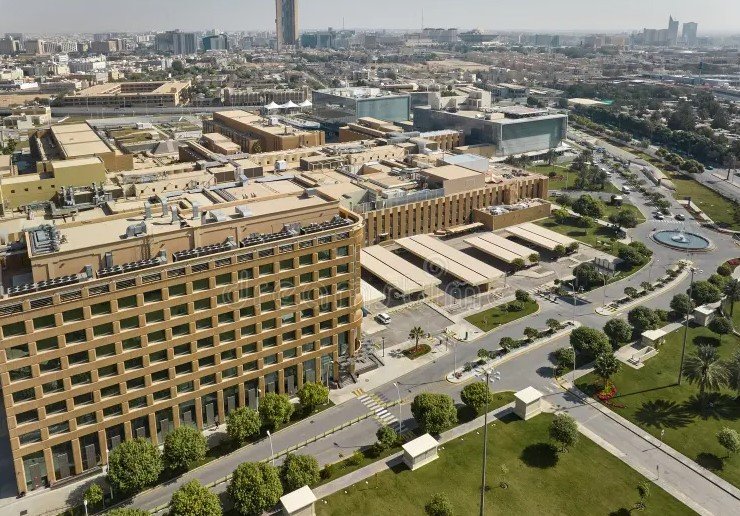Eight-year-old patient recovers in record time after groundbreaking robotic procedure at Riyadh’s KFSHRC
An eight-year-old child in Saudi Arabia has become the first pediatric patient in the world to receive a fully robotic liver transplant, in what doctors are calling a historic step forward for surgical innovation. The high-stakes procedure was performed at Riyadh’s King Faisal Specialist Hospital & Research Centre (KFSHRC) and has drawn international attention.
With not a single hand touching the liver during its removal or implantation, the clinical team led by Professor Dieter Broering relied entirely on robotic tools to carry out the delicate transplant—traditionally considered too complex for machines, especially in pediatric cases.
A Procedure Once Thought Impossible—Now Reality
Liver transplants in children are incredibly complex to begin with. The anatomy is small, fragile, and often unpredictable. Most centers worldwide still rely on traditional open surgery, with teams of expert surgeons working in tandem. But at KFSHRC, the scalpel was traded for precision-controlled robotic arms.
Broering, Executive Director of the hospital’s Organ Transplant Centre of Excellence, said adapting adult robotic techniques to a child’s body required enormous reengineering.

He explained, “We had to rethink everything—from the angle of entry for the robotic arms to how much pressure each tool could apply. Nothing could be done as-is.”
One wrong move and the child’s small blood vessels or bile ducts could rupture. The risks were enormous. But the results were extraordinary.
From Bedridden to Playing in Days
Perhaps most astonishing was how fast the child bounced back. Instead of a month-long hospital stay, the child was discharged in just two weeks.
That’s not just good—it’s practically unheard of in liver transplant circles.
• Traditional pediatric liver transplant recovery averages 30 days.
• Robotic-assisted version at KFSHRC achieved full discharge in under 14.
• Post-operative pain and scarring were drastically reduced.
The smaller incisions made possible by robotic tools meant less trauma to the child’s body, fewer stitches, and a dramatically faster healing process. Nurses reported that the patient was sitting up and eating within days.
How They Pulled It Off: Precision Meets Preparation
The operation involved removing the left lobe of a liver from a living donor and implanting it in the child. Ordinarily, this process involves dozens of complex steps. But with robotic technology, every action had to be pre-programmed, rehearsed, and double-checked.
One major challenge? Getting the robotic tools inside such a small body.
“The tools were built for adults, so we had to modify the surgical ports and recalibrate arm motion to fit within a tighter workspace,” Broering said.
Then there was the matter of visibility. Surgeons depend on a clear field of view. In this case, the 3D visual system in the robot offered better-than-human precision—so good, in fact, that surgeons were able to navigate veins just a few millimeters wide.
Why It Matters Far Beyond Saudi Arabia
Saudi Arabia’s leadership has been vocal about pushing the kingdom into a global spotlight for medical and technological breakthroughs. This procedure, successful on the first try, adds credibility to that ambition.
It’s also a major feather in the cap for KFSHRC, which has emerged in recent years as one of the region’s leading centers for transplant medicine.
Here’s a quick snapshot of how this stacks up globally:
| Surgical Milestone | Date | Country | Notes |
|---|---|---|---|
| First adult robotic liver transplant | 2020 | South Korea | Used hybrid manual assistance |
| First robotic kidney transplant in child | 2022 | France | Partially assisted |
| First fully robotic pediatric liver transplant | 2025 | Saudi Arabia | Zero manual surgical intervention |
Even more, the KFSHRC team plans to share its techniques with hospitals across the globe, potentially changing how pediatric liver transplants are handled worldwide.
Technology Is Moving Faster Than the Rules
Despite the triumph, the operation also raises questions.
How do you regulate surgery when there’s no surgeon holding the scalpel? What happens when software goes wrong? How are complications handled when robotic arms are already deep inside an organ cavity?
The team says every possible emergency scenario was pre-planned. And while robotic-assisted surgeries have been growing in popularity for over a decade, full robotic autonomy in such a delicate setting is still mostly uncharted territory.
One thing’s clear, though: the appetite for risk paid off. Big time.
What Comes Next?
Broering hinted that this is only the beginning. While this particular surgery focused on a left-lobe transplant, his team is already preparing for more complex cases.
He also emphasized KFSHRC’s commitment to sharing their findings with the global medical community—not hiding behind patents or exclusivity.
“This has to be collaborative,” he said. “We’re talking about children’s lives. The knowledge belongs to the world.”
His team is working on detailed documentation, including intra-operative recordings, to publish in leading surgical journals by year-end.
And yes, they’re already fielding calls from hospitals in Europe, the U.S., and Asia.
